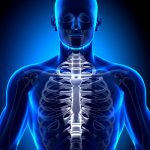Florida car accidents can occur in many different scenarios, each with its own distinctive causes and effects. Ranging from minor fender-benders to catastrophic collisions, every car accident unfolds with its unique characteristics. Different types of scenarios can have varying injuries, from minor car accidents involving aches and pains to severe outcomes like a broken sternum car accident, which occur in about 3-6% of motor vehicle collisions. Whether it's a rear-end collision, a sideswipe, or a multi-vehicle pile-up, the circumstances surrounding every car accident are different, including the injuries they inflict.
While each car accident presents its unique set of circumstances, there are certain car accident scenarios that occur more commonly on roads worldwide. These common situations, though different in individual circumstances, share underlying patterns that contribute to their them being more common than other types of car accidents. Recognizing these common car accident scenarios is important for drivers, as it allows them to recognize and enact defensive driving practices and remain vigilant on the road. By understanding the typical car accident scenarios that lead to accidents, drivers can:
-
Anticipate potential risks
-
Drive safely
-
Respond effectively
-
Understand who is at fault
Understanding the nuances and common car accident scenarios is crucial in comprehending the complexities of road safety and injury prevention measures.
Florida Car Accident Statistics
In 2022, the Florida Highway Safety and Motor Vehicles reported a total of 397,620 car accidents across the state, which averaged around 1,089 crashes per day. Tragically, 3,553 individuals lost their lives in these motor vehicle accidents throughout the year. Many of these fatalities, 579, occurred when the unfortunate individual was not using a seatbelt. Along with these fatalities associated with not wearing a seatbelt, there were 1,010 incapacitating accidents and 2,050 non-incapacitating accidents related to seatbelt non-use. These statistics highlight the critical importance of seatbelt usage as well as knowing the most common car accident scenarios. Being vigilant and enhancing road safety measures to reduce the number of accidents and fatalities on Florida's roads is paramount to saving lives and preventing tragic injuries.
Rear End Collisions
Rear-end collisions are one of the most common types of car accidents in Florida. In fact, approximately 29 percent of all crashes, according to the National Highway Traffic Safety Administration (NHTSA). These types of accidents occur when the front bumper of one vehicle collides with the rear end of another. Despite their frequency, rear-end collisions are far from minor car accidents, and can result in serious injuries, including fatalities. Rear-end car accidents can yield a wide spectrum of injuries, ranging from minor discomforts like back pain and lacerations to more severe injuries like:
-
Whiplash
-
Spinal injuries
-
Traumatic brain injuries
-
Broken sternum
Even pre-existing conditions such as degenerative disc disease can be exacerbated by the force of impact in rear-end collisions.
The causes behind these accidents are many, often stemming from drivers' distractions, such as cell phone use or not paying attention to traffic lights. Reckless driving behaviors also contribute to the high rate of rear-end collisions, including:
-
Speeding
-
Following too closely
-
Failure to maintain a safe following distance
-
Inability to control vehicles in adverse weather conditions
Knowing the causes of rear end collisions is important in helping to prevent them and the subsequent injuries that may occur. In 2022, there were 273 incapacitating accidents in Florida that were caused by following too closely. 16 individuals lost their lives due to the same type of driving behavior.
Consequently, victims of rear-end collisions may seek compensation for their injuries, including compensation for fractured sternum and other debilitating injuries. This also includes seeking compensation for the emotional and financial aftermath of rear end accidents.
T-Bone Collisions
T-bone collisions, also known as broadside accidents, are a distressingly common occurrence on roads in the US. These accidents are typically characterized by the front of one vehicle striking the side of another, forming the shape of a "T." These accidents often result in severe injuries and substantial property damage, with T-bone accidents alone accounting for 23% of vehicle occupant fatalities, as reported by the Insurance Institute for Highway Safety, and they are very common in Florida, unfortunately.
T-bone collisions pose grave risks to all road users, and are commonly caused by factors such as:
-
Speeding
-
Driving under the influence
-
Distracted driving
-
Disregarding traffic signals
The impact of such accidents can lead to a range of injuries, including:
-
Aortic Dissection – Aortic dissection is a term referring to a tearing of the aorta, causing a separation of its layers and leading to severe internal bleeding that commonly causes death if not treated in time.
-
Organ Damage – Organ damage in car accidents can occur due to seat belt syndrome, and can result in tears and bruising to vital organs.
-
Bone Fractures – Bone fractures in T-bone accidents often cause injuries to the neck, pelvis, clavicle, and skull, and are also prevalent outcomes of the forceful impact from these collisions. A broken sternum can also result from hitting the dashboard, side of the vehicle, or from a seat belt injury.
-
Traumatic Brain Injuries – Traumatic brain injuries, including concussions and brain bleeds, are potentially serious injuries that demand immediate medical attention to mitigate the risk of further brain damage, such as coma or fatality.
Understanding the common causes and injuries associated with T-bone collisions underscores the importance of practicing defensive driving and following all traffic laws to prevent devastating consequences.
Parking Lot Accidents
Parking lot accidents are also a common car accident scenario in Florida, characterized by collisions that typically occur within parking areas at grocery stores, malls, and event centers. These collisions often happen due to drivers being preoccupied with either securing or leaving a parking space. This is often a distraction that increases the likelihood of accidents. Common types of parking lot collisions involve:
-
Two vehicles trying for the same parking space simultaneously
-
Two vehicles are backing up, causing blind spots or diverting attention
-
A vehicle pulls into oncoming traffic within the parking lot where right-of-way rules still apply
While many parking lot accidents result in low-speed fender benders, they can still lead to significant car accident injuries. Airbag deployment, even at low speeds, can cause chest injuries such as a broken sternum, and even minor parking lot accidents can result in whiplash injuries. Pedestrian accidents are also not uncommon, particularly involving children, which can be hard to see and result in devastating consequences. Understanding the common causes and potential injuries that can occur with parking lot accidents highlights the importance of driving defensively and remaining vigilant in parking areas to mitigate risks.
No Turn Signal Collisions
No-turn signal car accidents are another type of common car accident that often leads to collisions and injuries for other drivers, pedestrians, and cyclists. These types of accidents occur when a driver fails to use their turn signals to let others know of their intended maneuvers, such as:
-
Turning at intersections
-
Changing lanes
-
Entering or exiting highways
-
Maneuvering into parking spaces
Not using a turn signal to notify others of your actions deprives fellow road users of crucial information that also hinders their ability to adjust their driving or navigation accordingly. Common causes of no-turn signal accidents in Florida include driver negligence, distracted driving, or simply forgetting to use the turn signal. Injuries resulting from these collisions can vary in severity, with injuries ranging from minor bruises to more serious injuries like broken sternum. Some common injuries include whiplash, broken bones, concussions, and spinal cord injuries.




